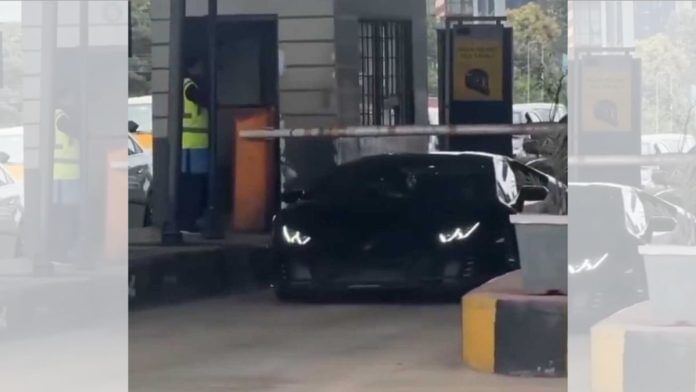When a Rs 4-crore Lamborghini Huracan zoomed past a toll plaza barrier without even moving it, the internet went on an overdrive. This escape, which could have saved the driver a good Rs 200 toll tax, has started a class debate and people are pressing the ‘I will judge you’ pedal. No, this pedal is not on the Huracan.
“Money can’t buy class.” While that may be true, people are blindsided to a bigger culprit — India’s road builders themselves.
Indian roads are not yet equipped to handle hot, classy, and grounded supercars. And the incident proved that even the toll plazas aren’t ready. The first reaction is laughter. The second, a slow realisation that the joke, really, is on us. What the clip exposed wasn’t a rich man’s entitlement, but a system that has refused to update itself. The barrier failed because India built world-class highways but left the toll plaza hardware frozen in the Maruti 800 era. It’s a new kind of low for Indian roads. And yes, the pun is intended.
Who knows the Lambo guy escaped the toll on purpose. After all, they could not test the beast by touching the odometer to 200 kmph. Most highways in India do not have the speed limit beyond 120 kmph. Poor chap.
While the government has recently focused a tad too much on superior, broad, and smooth highways, and smart ways of collecting toll taxes across the country, it has forgotten that with such roads come multi-crore supercars. And, mind you, supercars are super low in height. Yes, it is lower than the typical height of a car toll plaza barrier gate arm in India, which in the closed position is about 4-5 feet from the ground.
And the Huracan is only 3.8 feet in height.
This is the exact reason the Huracan incident should not be dismissed as a “funny” and a “money can’t buy class” incident. Instead, it should remind us all that the country has failed to evolve and keep pace with the rapid transformation of vehicle profiles. If the boom barriers cannot physically prevent a vehicle from passing, then the very idea of their ‘expensive’ installation does not make sense.
Meanwhile, the memes have also missed a crucial safety angle. Supercars are engineered to glide, not slam unexpectedly into rigid metal arms designed for SUVs. A toll barrier positioned at the wrong height can be dangerous. Any collision at high speed, accidental or not, could turn a car worth crores into shrapnel, injuring the driver and the booth operator, while also damaging vehicles around it.
Also read: Maruti-Suzuki’s eVitara is ready to hit the Indian roads—country’s EV ecosystem isn’t
Record sales of supercars
The barriers on Indian highways have been made mostly for average Indian carbuyers. The toll plazas here were designed with one single thought: that cars — from old-generation Ambassadors to the 21st-century Mahindra XUVs — would be of the same average height. It never evolved out of it. Nobody gave a second thought about the low-slung supercars on Indian roads, whose sales have multiplied in the last 10 years, especially post-2020, driven by young and affluent buyers.
For decades, our roads were ruled by vehicles with ground clearance high enough to step over a small plateau. You didn’t drive a car; you manoeuvred a heavy metal box which refused to turn at one go. No one in those days could imagine that India would one day have cars so low that bumpers or potholes would feel entitled to kiss the underbelly, breaking the driver’s heart a little each time.
India is now one of the fastest-growing supercar markets in the world. Lamborghinis are selling record numbers. Mercedes-Maybach is booming. The BMW’s M series is becoming as aspirational as SUVs for young, wealthy Indians.
This is not about the toys of rich Indians. It is about how manufacturers have evolved with time and lowered chassis heights for performance, aerodynamics, as well as sexier looks. But, it is taking an eternity to redesign or reprogramme the toll barriers in India.
The funniest part is how confused these barriers are. Watch any random toll plaza on any random highway, and you will notice: too high to stop a Lamborghini and too low for other Indian cars, which can definitely bruise the bonnet. It refuses to open for the perfect FASTag-ged car, but would eerily open up out of nowhere at midnight.
A toll plaza that could not stop a Lamborghini but can still create a half-kilometre jam is the perfect example that Indian roads still linger in the past, have not evolved in the present, and are not ready for the future.
Views are personal.
(Edited by Aamaan Alam Khan)







Paying should not feel like a penalty; it should feel like the right thing to do. When toll exemptions are freely granted to those connected with the administration and the road quality remains poor, there’s little motivation for anyone to pay. It’s hard to expect compliance when a tax is grudgingly borne by only a few.